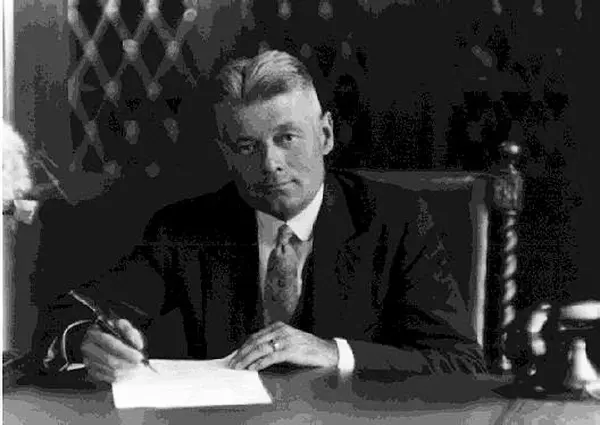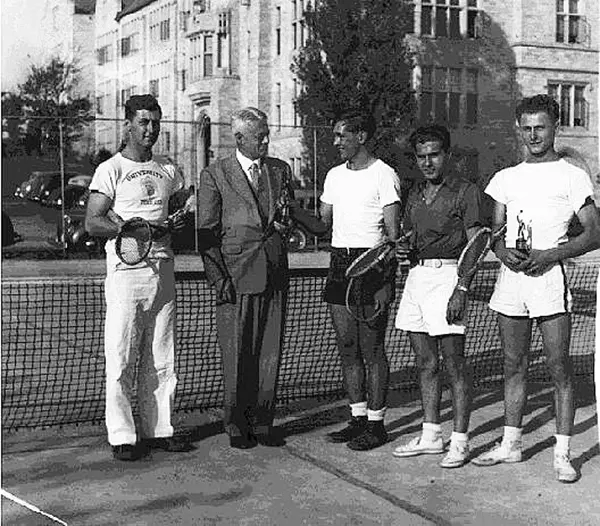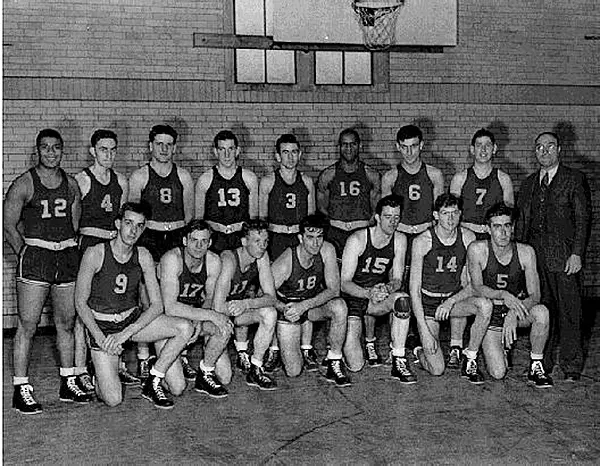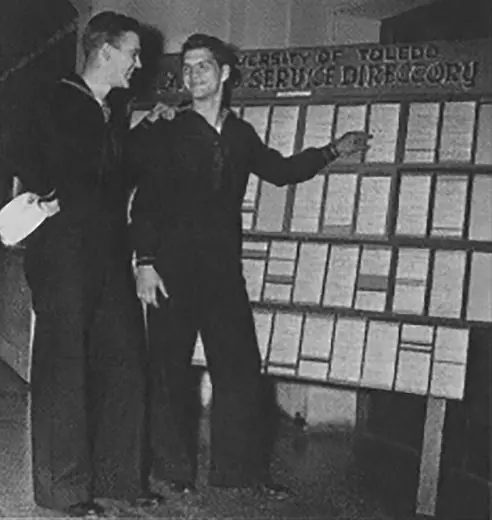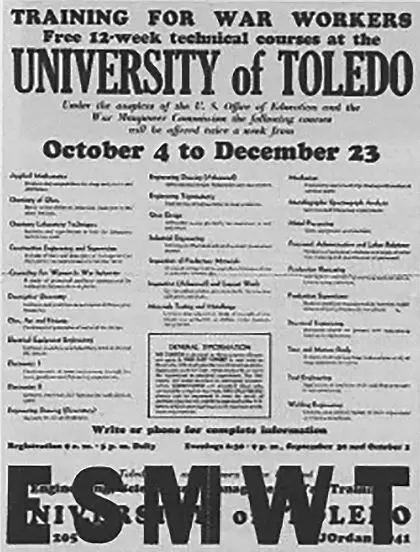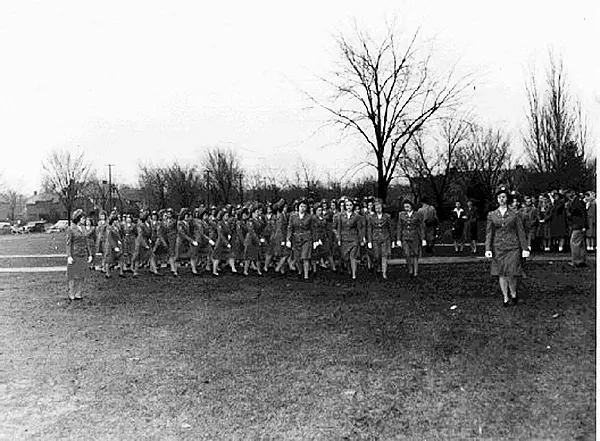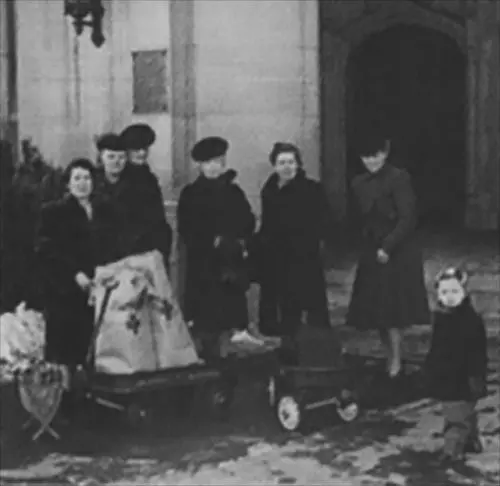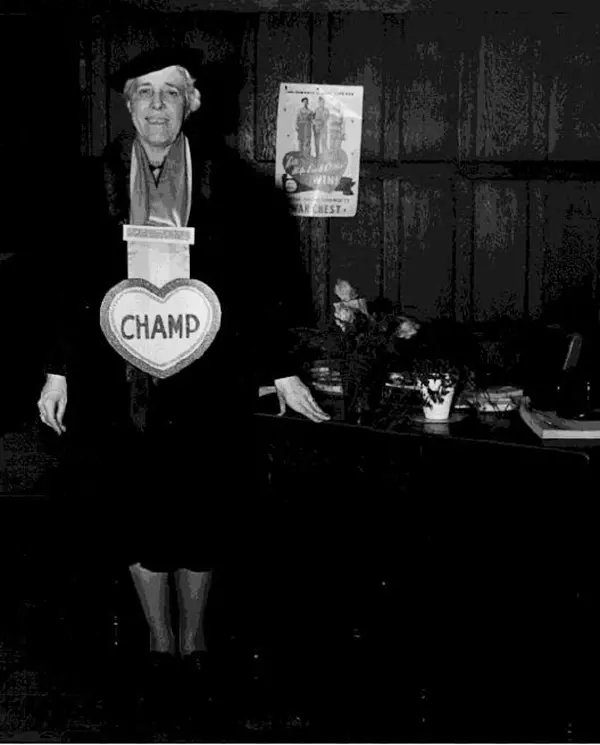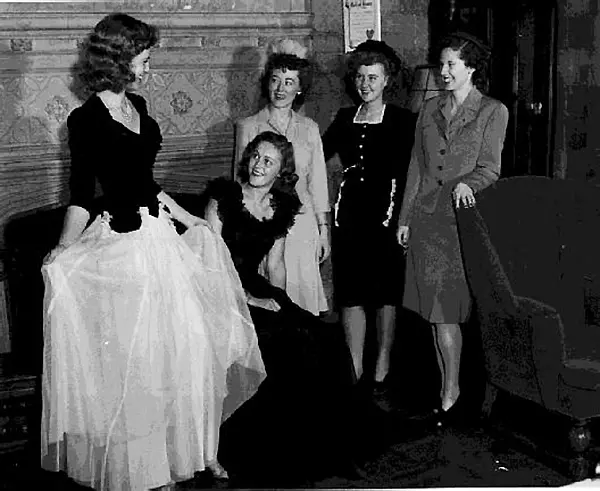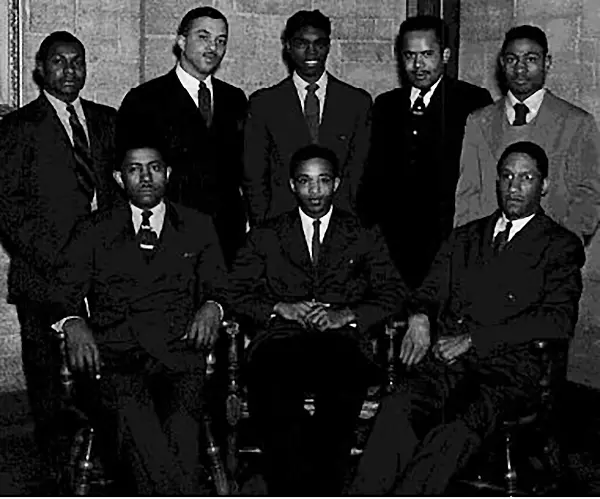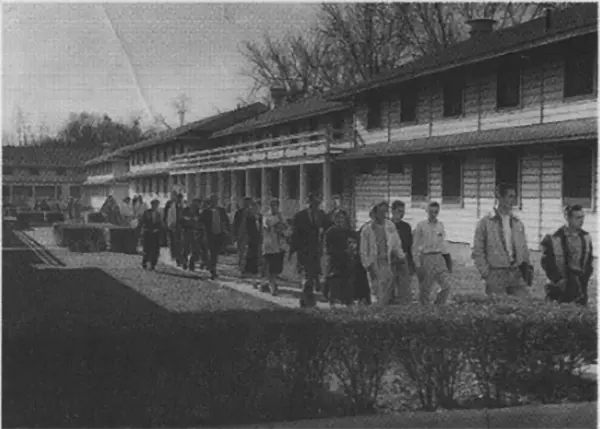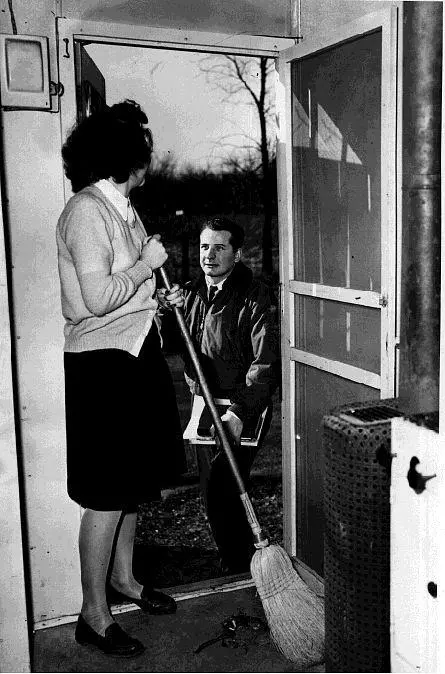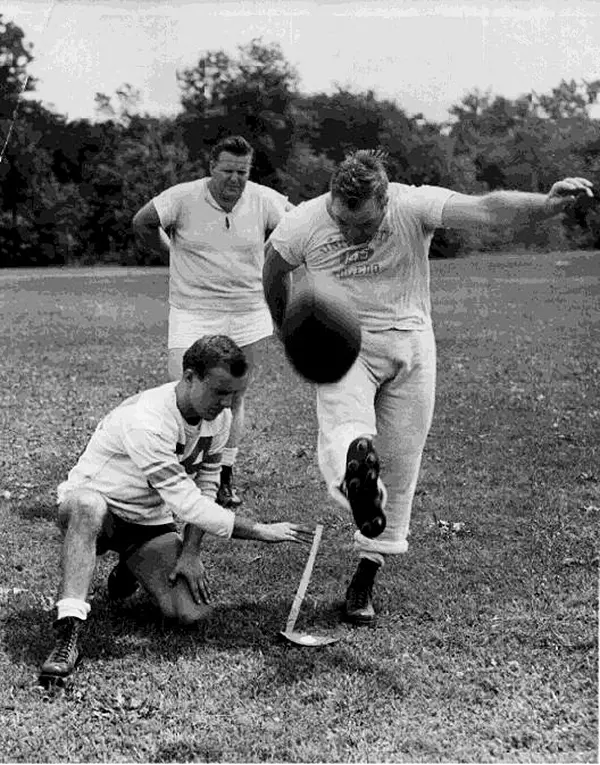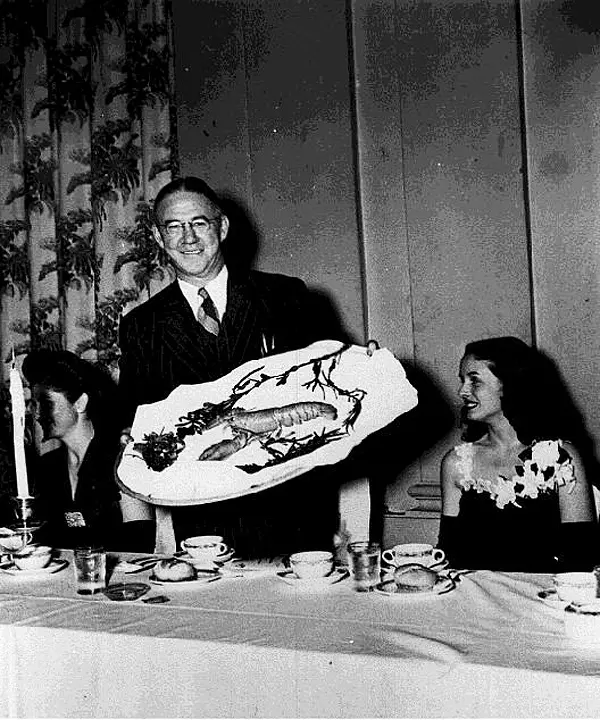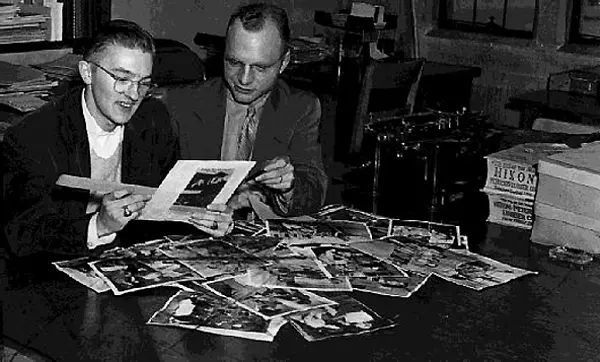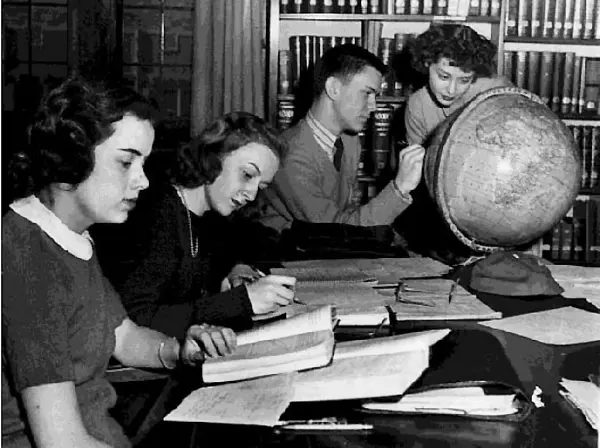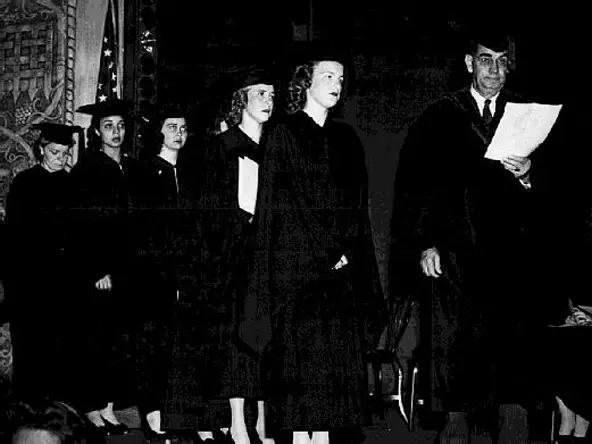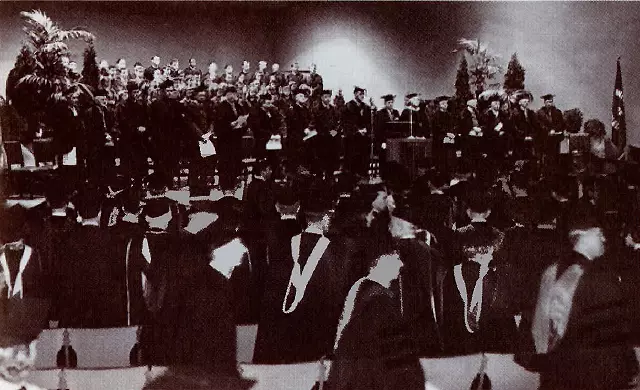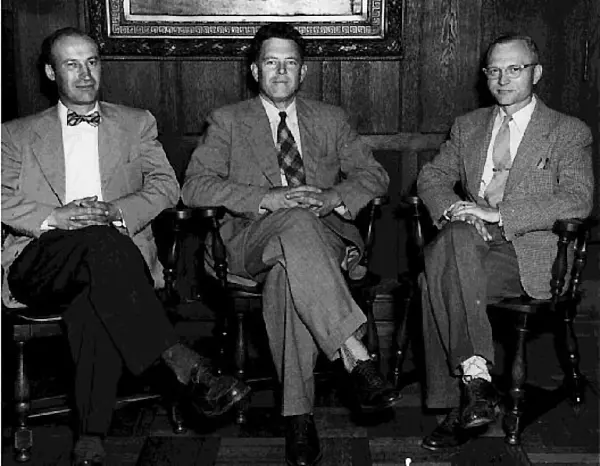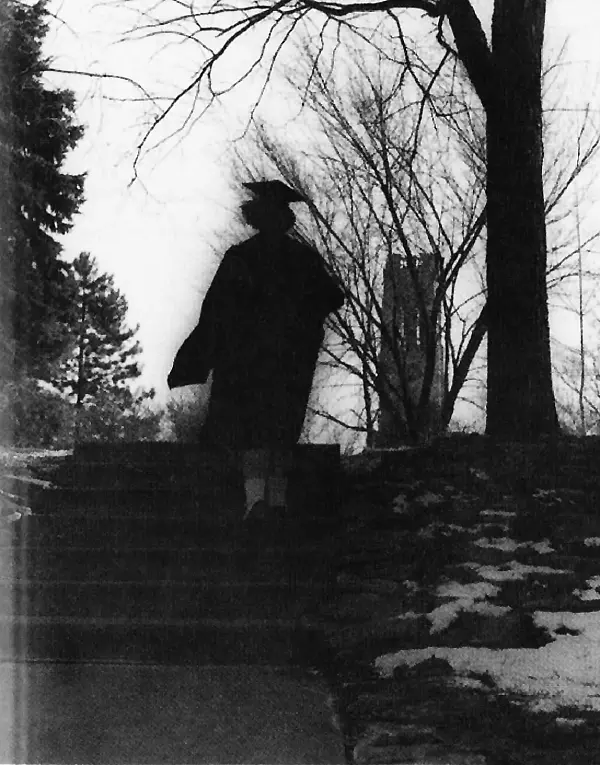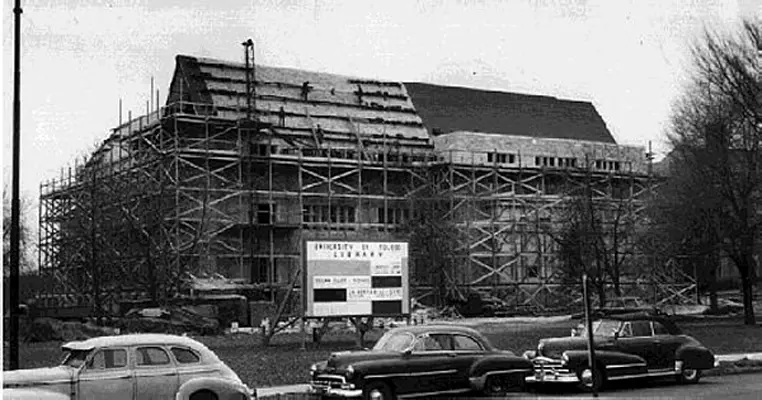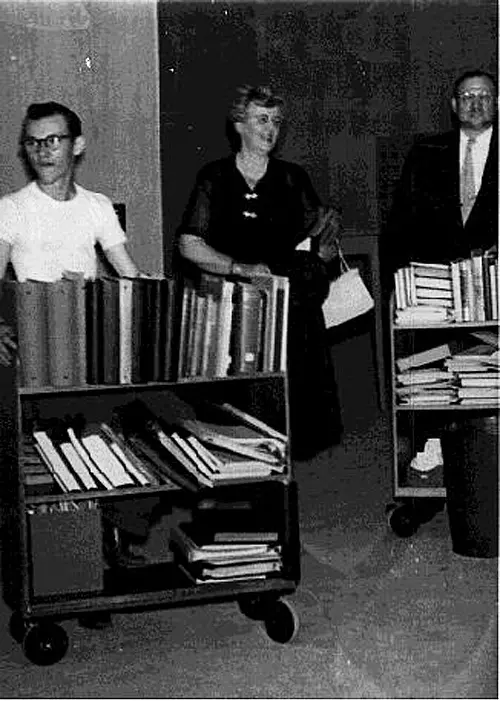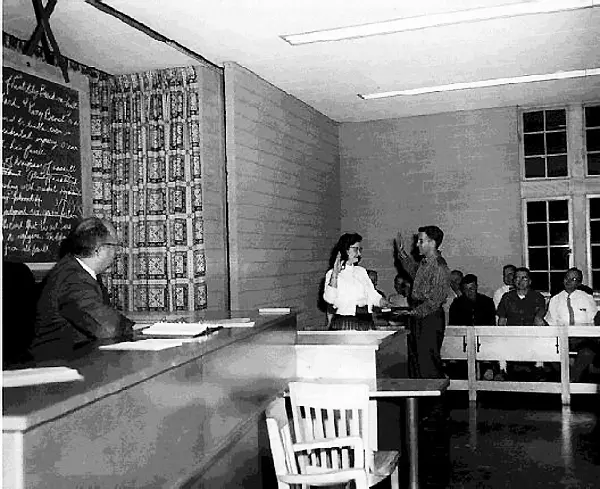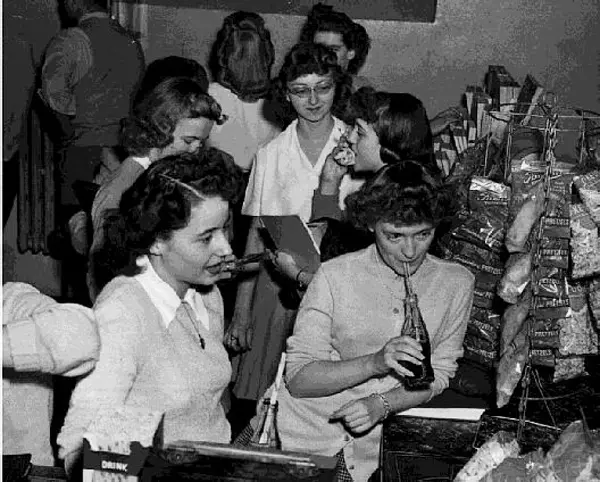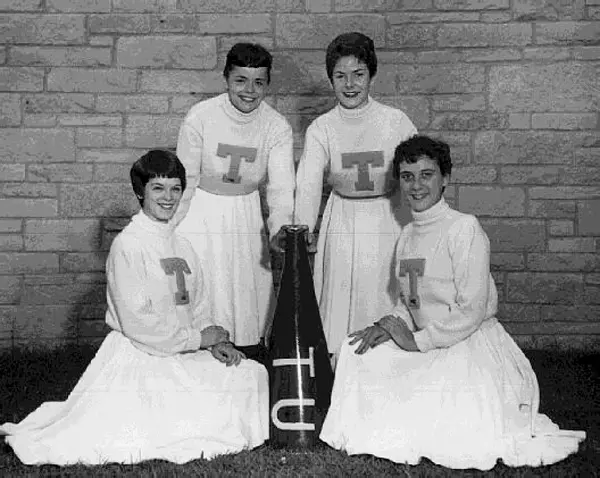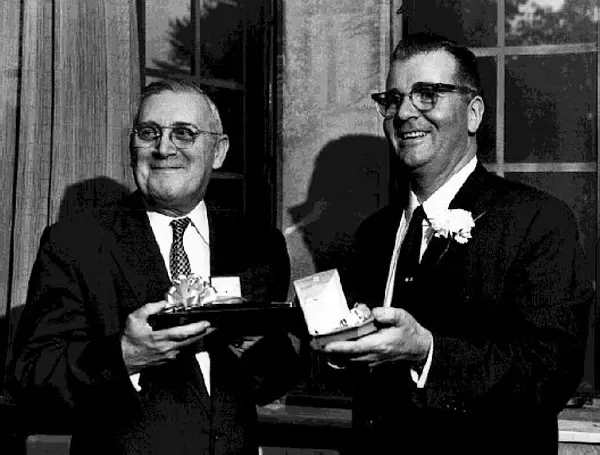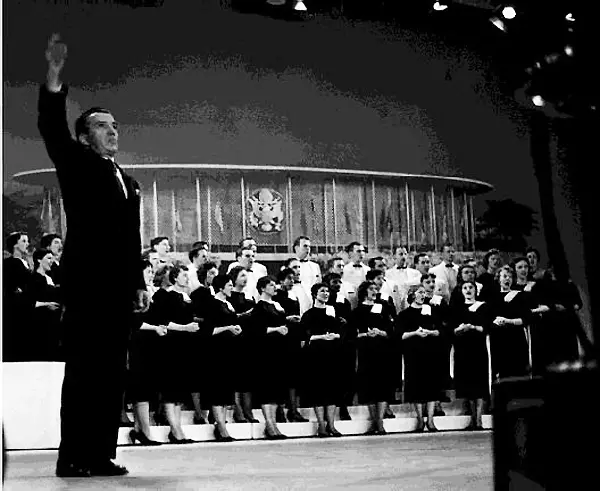Chapter 3. The War and Its Effects, 1940s-1950s
The Depression decade was one of the most challenging for the University of Toledo. Despite the optimism brought by a new campus, the economic devastation of the city led some in Toledo to question whether the money spent on the university might not be better spent elsewhere. Many students who attended UT were so destitute that the most sought-after campus job was in the cafeteria because it provided a free meal each day. But for the students who were able to attend, the university provided them an opportunity for a better future.
President Philip C. Nash (1933-1947) saw the university through much of the Depression and all of World War II.
While the Depression decade determined in many ways if the university would survive, it was World War II and its aftermath that was the real watershed. The war transformed UT from a small, tenuous municipal institution barely able to make ends meet into the modern university it is today. Everything was changed by the war: the students, the faculty, the curriculum, and the social life. Some students who dropped out to fight for their country never returned. Thousands of others who never considered a college education found that military service provided them the opportunity that was previously beyond their reach. Some faculty left their teaching positions for government research jobs. Those who remained often had to fill in and teach courses outside their specialties. New programs of study included pilot training and military nursing. Campus social activities changed from dances and parties to holding war bond drives and knitting bees.
Members of the tennis team receive awards from President Philip Nash, ca. 1941.
The basketball team of 1941-42, coached by Harold "Andy" Anderson, played in the National Invitational Tournament in Madison Square Garden . The teams of 1939 and 1943 also played in the tournament.
Before the Japanese bombed Pearl Harbor, student sentiment at UT, as at most other college campuses, was firmly against U.S. involvement in the war. On April 20, 1939, the students rallied for University Peace Day, an annual event. UT President Philip Nash spoke to the students about the threat on the horizon. Although Hitler was months away from invading Poland and France, Nash believed war was inevitable, telling students that “even after spending much of my life resisting war, I nevertheless believe that war would be better than the surrender of freedom by democracies.” Anti-war sentiments evaporated quickly after Pearl Harbor.
UT students Lyle Clark and Dodd Tonjes check information on the location of friends and classmates who are serving in the war at the Armed Services Directory, 1944.
Almost immediately, the impact of the war was felt on campus. Enrollments plummeted as men dropped out to enlist. In the first years, enrollment in the College of Engineering dropped 90 percent, and the College of Arts and Sciences lost 50 percent of its students. Many faculty accepted positions in the government and military. While the Selective Service Act gave students a one-year deferment, many declined it.
After war was declared, the government asked President Nash to identify facilities that could be used for the war effort, and he was authorized by the Board of Directors to make all available. One of the first programs instituted at the urging of the government was an accelerated degree program. When the draft age was lowered to 18 in 1942, UT instituted Saturday and summer session classes for high school students that allowed them to enter the university at the end of their junior year.
A poster advertising Engineering, Science, and Management War Training courses at UT, ca . 1943
The university and the government cooperated in many other programs. In April 1942, the U.S. Office of Education designated UT’s library as one of six key war information centers in Ohio. The library served as a repository for pamphlets and brochures that citizens could access to learn about the war effort.
The military quickly began contracting with colleges to provide training facilities because it was cheaper than building new ones, and universities were already organized to educate large numbers of students. UT offered war training programs for both military and civilian persons.
For civilians, UT was one of 200 colleges to offer Engineering, Science, and Management War Training (ESMWT) program classes. This program filled the need for engineers, chemists, and production supervisors for war-related industries and was especially suited for a university like UT, which already had an established engineering college. The free courses emphasized practical training over theory. At UT, ESMWT was administered by Delos Palmer, dean of the College of Engineering, and attracted over 1000 students in the first semester. Women especially were encouraged to take ESMWT classes. The program’s 1941 newsletter declared: “To Win the War, Women Must Work.” When the ESMWT program ended in 1945, some 15,000 Toledoans had been trained.
The Civilian Pilot Training Service was another federally-funded program offered at UT. Most of the trainees entered the service after graduation. The program offered ground training at the university and flight training at Toledo Municipal Airport. Over 100 men graduated from the program.
The success of civilian pilot training led the Army to expand it to enlistees in the Air Crew. Due to a lack of facilities at the Miami Beach base of the 27th College Air Corps Training Unit, the government contracted with UT to house, feed, and train a detachment of the division. Men from the Air Crew began arriving in March 1943 for academic, military, physical, and flight training. They lived in the Field House, and within 13 months almost 1,800 went through the program.
Another federal program trained women to become nurses in Army field hospitals. The university provided academic training, and five Toledo hospitals provided clinical practice. UT faculty supervised weekly military drills for the nurses. More than 300 graduated from the U.S. Cadet Nurse Corps program.
Women enrolled in the U.S. Cadet Nurses Corp program practice drills, 1944.
The war also provided federal money for research to universities. Under the Office of Scientific Research and Development, the federal government allocated $19 million throughout the country for university research. Because of the benefits of government-sponsored research for both universities and the government, such funding continued after the war, and led UT to organize the Research Foundation in 1945.
The wives of UT faculty members collect items for the Red Cross for the war effort, ca. 1942
Student social life also changed with the war. War Chest fund drives raised money for groups such as the USO and the War Prisoners’ Service. UT was the first university in the country to have a Red Cross chapter, and the group sponsored knitting bees to make sweaters for soldiers. Weekly air raid drills were held. With a dwindling number of male students, women assumed leadership roles on campus, serving as president of Student Council in 1944 and editors of the newspaper and yearbook from 1943 to 1945. Intercollegiate basketball and football were suspended in 1943, and did not resume until after the war.
Lucille Mack, secretary to President Nash, displays the award she received as top fund-raiser for the Greater Toledo War Chest, 1944.
The full impact of the war on the University of Toledo, however, cannot be explained by knitting bees, federal programs, or enrollment declines. The real impact of the war was personal: disrupted lives, feelings of fear and anxiety, and more than occasionally, death. Over 100 UT students were killed in the war.
Members of Kappa Alpha Psi fraternity, 1943.
The war was also personal for President Nash. From 1929 to 1933, as executive director of the League of Nations Association, Dr. Nash had fought to end future wars by advocating that the U.S. enter the League. But in 1920, Congress voted against the League. As President Nash told the graduating class of 1939, “One of the greatest human catastrophes is war, and for twenty years I have been fighting against it. But we in this country, and the people of the world as a whole, appear not to have learned that the lesson that the only cure for anarchy is organization and the only cure for war is law.”
UT established a War Memorial Scholarship Fund in 1946 to provide money for the children of slain or missing UT students so that these children might someday attend the university. A plaque with the names of the war dead was placed at the entrance to the new library building (later named Gillham Hall) in 1953. It remains today as one of the lasting reminders of the impact of the war on the university.
The 1944 Servicemen’s Readjustment Act, more commonly known as the GI Bill of Rights, was both a way to reward veterans for their service in the war and a way to cushion the economic blow as they returned seeking peace-time jobs. The act paid veterans up to $500 for college tuition and provided a living allowance between $65 and $90 per month. Over 3000 veterans took advantage of the program at UT. Because most veterans were older and many had wives and children, some arrangements were required to house them. In 1945 the university purchased surplus military housing and moved it to campus to house the students. The area was dubbed “Nashville” by the students after President Philip Nash. Other surplus barracks were purchased from Camp Perry and erected behind University Hall as classrooms and laboratories.
After the war, Army barracks from Camp Perry were constructed between University Hall and the Field House and served as classrooms and laboratories until the mid-1970s.
Following the war, veterans attending college on the GI Bill rented on-campus housing for their families in "Nashville" dubbed by students after President Philip Nash
Football, which was suspended during the war, resumed in 1946.
Sports resumed at war’s end. Basketball returned in 1945 and football in 1946. Wayne Kohn, an employee of the glass manufacturer Libbey-Owens-Ford, suggested renovating the stadium by incorporating several glass additions and re-naming it the Glass Bowl. The first Glass Bowl game was held in 1946. Lights were also added that year, even though the first night game had to be moved due to an electrical short. In 1947, UT resumed athletic play with Bowling Green State University which it had canceled in 1936 after fan rowdiness and disagreements, and in 1949 UT joined the Mid-American Conference.
The first Glass Bowl banquet held at the Commodore Perry Hotel, 1946. Athletic Director David Connelly displays a lobster given him by the governor of Maine to mark the tournament game between UT and Bates College.
Blockhouse editor Richard Villwock receives help from yearbook advisor Jesse R. Long, 1947.
In many ways, the final casualty of the war for the University of Toledo was Dr. Philip Nash. In 1946 he became gravely ill with a heart condition, and he died in May the following year. Dr. Nash’s presidency had seen the university through the Depression and the war, a growth in the student population from 2000 students to over 6000, and a doubling of the budget to $500,000.
Left: Business students study for exams, 1946. Right: Leading a commencement ceremony in Doermann Theater is Raymond L. Carter,
who served as Dean of Administration from 1934-1951 and Acting President from 1947-1948.
The inauguration ceremony of President Wilbur W. White , 1948.
In 1947, the Board selected Wilbur W. White to replace Dr. Nash. President White, who had come to the post from Western Reserve University, was inaugurated in a ceremony at the Peristyle at the Toledo Museum of Art. He proposed a progressive ten-year development plan calling for new buildings, including a home for the College of Engineering and a combined law school and library building. President White did not live to see many of his plans come to fruition as he died in November 1950. He was succeeded temporarily by a three-member Interim Operating Committee consisting of John Brandeberry, Jesse Long, and John Turin.
The Interim Operating Committee governed the university during the period between the death of Wilbur White and the assumption of the presidency by Asa Knowles in 1951. The committee consisted of John J. Turin, John B. Brandeberry, and Jesse R. Long.
The period of administrative turmoil that began with Dr. Nash’s death in 1947 ended in 1951 with the appointment of Asa S. Knowles as president. Dr. Knowles had been a vice president at Cornell University before coming to UT and had a background in administration. He saw to the completion of a new men’s dormitory in 1952 and the new library in 1953. He expanded educational programming for adult students and created the Greater Toledo Television Foundation as a way to utilize television for educational purposes. WGTE Channel 30 was licensed by the Federal Communications Commission and began broadcasting in 1958.
A student readies for commencement, ca. 1950
A new library and law school building under construction in 1952.
Librarian Mary Gillham supervised moving the library's holdings to the new building, 1953
One unfortunate incident that brought UT national publicity during Dr. Knowles’s tenure was a game fixing scandal involving UT basketball players. The 1950 team was an exceptional team with a streak of wins. Suddenly, the team began to have problems. After a game against Niagara University, three players were charged by a New York district attorney with shaving points at the request of a gambler in exchange for $500 payments. One more player was later charged with doing the same at earlier games. The players were allowed to withdraw from the school. A new law passed by the Ohio legislature after the scandal made game fixing by any amateur athletes subject to fine and imprisonment.
Law students practice their skills in Moot Court.
Students socialize in the Student Union in Libbey Hall, ca. 1950.
Students in the post-war period seemed to lack much interest in political affairs, and were conservative in dress and attitude. Some dubbed these students the “Silent Generation.” Even the outbreak of the Korean War did little to disrupt the climate. The most prevalent counter-culture expression of revolt was the “panty raid.” This activity was given a unique twist in 1953 at the University of Toledo when women raided a male dorm in retaliation for a raid on their dorm.
Several members of the cheerleading squad of 1957-58: Tam Townsend, Pat Rankin, Mikki Eppard, and Kathy King.
In 1956, Toledo attempted to pass a city charter amendment that would have provided a 2-mill levy for capital improvements, including new buildings for UT. The levy was soundly defeated. The city informed the university that it could afford only half of the estimated cost of the proposed engineering building, and the rest would have to come from private sources. Over $1 million was raised, with the biggest contribution from Charles A. Dana, head of the Dana Corporation.
Arts and Sciences dean Andrew J. Townsend (left) presented gifts to President Asa S. Knowles at a party marking the departure of Dr. Knowles from UT in 1958.
Asa Knowles resigned the presidency in 1958 to become president of Northeastern University. His last official act was to meet with City Council to discuss the future financing of the university. Over 12 percent of the city’s budget was allocated to the university, and clearly this could not continue. The Council suggested that further study be given to acquiring financial assistance from the state, which would relieve the city of the burden of financing it while providing the funding needed for the university to grow.
The UT Chorus appeared on the Ed Sullivan Show in 1958.

